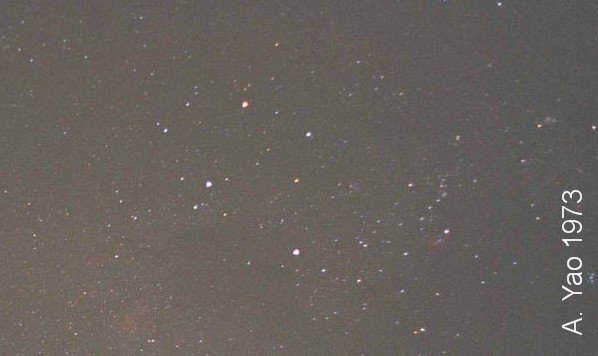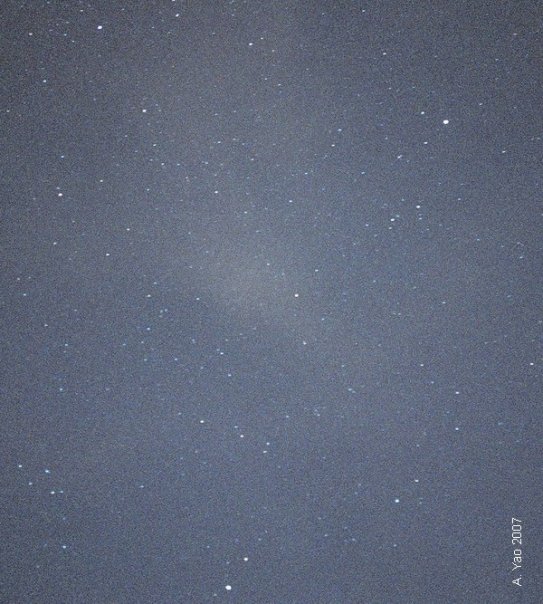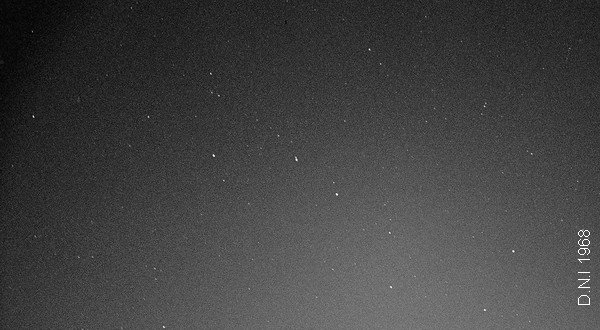last updated 27-Feb-2009
by Anthony Yao
in BC Canada
Under Construction
Sky watching is a great hobby, it integrates art, history, physics and mathematics in one box.
Watching the constellations requires a lot of patience, especially in a light polluted city.
Taking pictures of the night sky was also a challenge, long before the T-grain colour films were available, using panchromatic ( preferably extended-red ) film was the only choice. With long exposures and the effect of reciprocity failure of the different silver halide emulsions, estimation of exposure was relatively difficult. In Black and white pictures,the extended red film yields very uniform result with OBAFGKM star types. Panchromatic film can be used, red stars may appear as grey dots only.
With modern film developers in the 1960's the using of the available Penidone- hydroquione as the main reducing agents did help in simulating the results of moderate push-processing. Night sky pictures using this new method did yield acceptable negatives without using complicated film hypering methods or the multi-bath push processing method.
Pictures under preparation

|
Constellation Crux (The Southern Cross) taken in Marree, South Australia 1973; Kodacolor-X ASA 80 C-22 process. 14 secs, f/2 55mm lens.
|

|
The Summer Triangle (Cyngus, Lyra and Aquilla) and part of the Orion Arm of the Milky Way, taken in Vancouver, Canada 2007; Kodacolor 400 Max, 12 secs, f2.8 28mm lens. C-41 process
|

|
Ursa Major (The Big Dipper) taken in Tung Chung, Hong Kong 1968, Agfa Isopan 100, ( A commerically available consumer grade moderately extended red film ) rated at 400, 12 sec f/4 30mm lens. Push processed with the newest Phenidone-hydroquinone developer of that time(doubled the development time), a pass into an intermediate bath silimar to the CN-17 counter part to develop the slow acting lower emulsion, followed by stop bath and fixing.
|
E-MAIL
HOME


